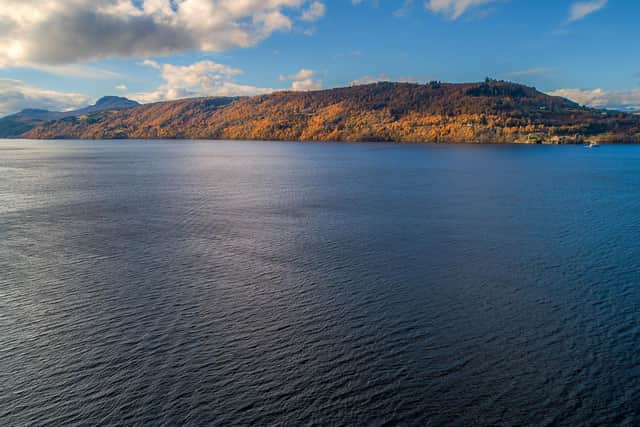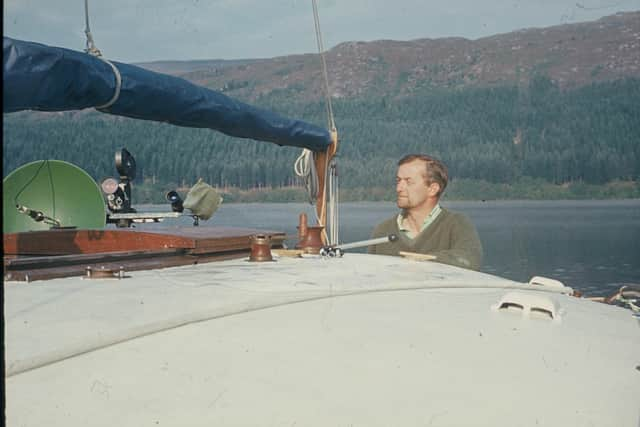Loch Ness Monster: New movie turns the lens on Nessie hunters who put beauty spot on the global map
It has been a cornerstone of the nation's tourism industry for decades - attracting more than 1.6 million people a year to the banks of a Highland loch in the hope of glimpsing a dinosaur-like creature emerging from its murky depths.
As well as bringing in coach loads of curious tourists every day, the mysterious cultural phenomenon of the Loch Ness Monster has long attracted an army of investigators, researchers, scientists and fame-seekers to its shores.
Advertisement
Hide AdAdvertisement
Hide AdNow a new documentary film is set to turn the spotlight on the “Nessie hunters” who have helped put the beauty spot on the world map and propelled a remarkable tourism boom now estimated to be worth £50 million a year.


Loch Ness: They Created A Monster, which gets its UK premiere at the Inverness Film Festival this weekend, will recall the heyday of Nessie fever and the extensive searches for evidence of the "the 10th wonder of the world."
Made by the BAFTA Scotland-winning filmmaker John MacLaverty, it has been funded by the Scottish Government agency Screen Scotland and the BBC, which will screen it later this year.
Loch Ness: They Created A Monster is said to turn the cameras on the Nessie hunters and their " lost world of rivalry, ridicule and rogues."
It explores the rise and fall of some of the most high-profile figures maintaining lochside vigils as their images were exposed as fakes or doctored, and rivalries descended into threats and even a fire bombing incident.


The documentary explores how a Japanese pop music promoter, a Second World War veteran, a Welsh aeronautical engineer and an American inventor were among those to pursue Nessie.Award-winning broadcaster Sir David Attenborough, Star Trek legend Leonard Nimoy and Blue Peter presenter Peter Purves are also featured discussing the hunt for Nessie in archive footage unearthed for the documentary, which will be screened in cinemas around Scotland this month.
MacLaverty's previous documentaries have explored the Scotland football team’s ill-fated ambitions of winning the 1978 World Cup in Argentina and the transformation of the Scottish tourism industry over half a century.
Advertisement
Hide AdAdvertisement
Hide AdHe said: “I tell a lot of stories about Scotland in my documentaries and this is probably the most famous story of them all.
"I wondered if there was another story around the monster and whether it could be interrogated a bit more, so I started looking into it.


"When I found the stories of these characters who all arrived at the loch I thought they were very interesting.
“The pinnacle of monster fever was between the late 1960s and early 1980s, so I decided to focus on that period.
“There was a fair bit of tension between the various expeditions. I wanted to turn the cameras around - away from the loch - and focus on the people on the banks, some of whom had monstrous egos."
The documentary recalls the infamous hoaxes of former soldier turned soldier Frank Searle, who created his own pop-up exhibition, and his disputes with researchers from the Loch Ness Investigation Bureau on the other side of the water.


Although Searle died in 2005, the documentary tracks down Belgian photographer Lieve Peten, who moved into Searle’s tiny caravan after responding to an advert for an assistant.
Advertisement
Hide AdAdvertisement
Hide AdShe recalls: “I tried to give people the right idea about Loch Ness, rather than all the stuff the newspapers put around. They made it into a huge joke. I thought that was a shame as it was a lot more than that."
Japanese music industry impresario Yoshio Kou recalls in the documentary how he raised 180 million yen from companies like Honda, Panasonic, Sony to assemble a team of investigators.
He says: "Everyone knows Nessie from reading about her in books. They all have this idea of her as a mythical Scottish animal. I wanted to take Nessie around the world, starting in New York, then London, Moscow, Beijing.”
The documentary traces the explosion of interest back to grainy film footage shot in 1960 by aeronautical engineer Tim Dinsdale.
His son Simon recalls: “I was acutely aware that dad was going off monster hunting. He had removed the passenger seat from the car where his tripod would go. He would be able to drive along and - like an air-gunner - would be able to film through the window.


"I can remember watching the footage for the first time through a projector. I remember being disappointed because it was so indistinct. My dad was completely convinced, which is why he spent so much time, and virtually the rest of his life, trying to get a better piece of film."
The new documentary is being launched months after the reopening of the official Loch Ness Centre and Exhibition in Drumnadrochit after a takeover and £15 million revamp, and a recent weekend-long research project - the biggest search of the loch for 50 years.
Advertisement
Hide AdAdvertisement
Hide AdIn the documentary, local businessman Willie Cameron, who founded the Loch Ness Marketing organisation in the mid-1990s, describes the monster as “a brand as big as Coca-Cola."
MacLaverty said: "The film’s attitude is kind of agnostic towards the monster.
"The people there don’t believe there’s anything you can say or do that will put people off. You can’t kill it – it's staggering.
“I think the economic impact these days is because of these guys and their stories in the 1970s. They went right round the world at a time when people wanted a wee bit of wonder.
"The Japanese guys who came over were less about the science and much more about the fun of searching for a monster.
"The monster’s almost been willed into existence. The thing that these people hold onto is eye-witness sightings, which science can’t explain away and probably never well. It’s a fairly harmless thing for people to believe in.
"We’re sometimes worried about being ridiculed in Scotland. But I think Scotland should hang onto it, celebrate it and embrace it.”
Comments
Want to join the conversation? Please or to comment on this article.
